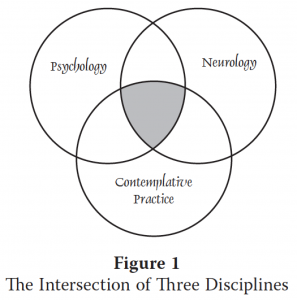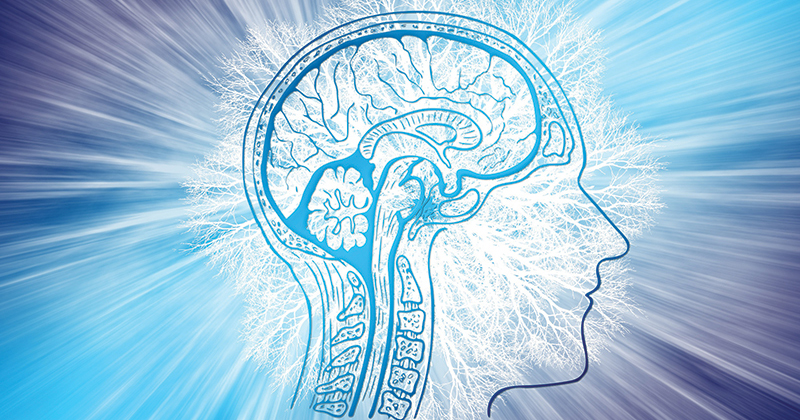“The principal activities of brains are making changes in themselves.”
—Marvin L. Minsky
When your mind changes, your brain changes, too. In the saying from the work of the psychologist Donald Hebb: when neurons fire together, they wire together – mental activity actually creates new neural structures (Hebb 1949; LeDoux 2003). As a result, even fleeting thoughts and feelings can leave lasting marks on your brain, much like a spring shower can leave little trails on a hillside.
For example, taxi drivers in London – whose job requires remembering lots of twisty streets – develop a larger hippocampus (a key brain region for making visual-spatial memories), since that part of the brain gets an extra workout (Maguire et al. 2000). As you become a happier person, the left frontal region of your brain becomes more active (Davidson 2004).
What flows through your mind sculpts your brain. Thus, you can use your mind to change your brain for the better – which will benefit your whole being, and every other person whose life you touch.
My book Buddha’s Brain aims to show you how. You’ll learn what the brain is doing when the mind is happy, loving, and wise. And you’ll learn many ways to activate these brain states, strengthening them a bit each time. This will give you the ability to gradually rewire your own brain – from the inside out – for greater well-being, fulfillment in your relationships, and inner peace.
Your Brain – Basic Facts
• Your brain is three pounds of tofu-like tissue containing 1.1 trillion cells, including 100 billion neurons. On average, each neuron receives about five thousand connections, called synapses, from other neurons (Linden 2007).
• At its receiving synapses, a neuron gets signals – usually as a burst of chemicals called neurotransmitters – from other neurons. Signals tell a neuron either to fire or not; whether it fires depends mainly on the combination of signals it receives each moment. In turn, when a neuron fires, it sends signals to other neurons through its transmitting synapses, telling them to fire or not.
• A typical neuron fires 5-50 times a second. In the time it takes you to read the bullet points in this box, literally quadrillions of signals will travel inside your head.
• Each neural signal is a bit of information; your nervous system moves information around like your heart moves blood around. All that information is what we define broadly as the mind, most of which is forever outside your awareness. In our use of the term, the “mind” includes the signals that regulate the stress response, the knowledge of how to ride a bike, personality tendencies, hopes and dreams, and the meaning of the words you’re reading here.
• The brain is the primary mover and shaper of the mind. It’s so busy that, even though it’s only 2 percent of the body’s weight, it uses 20-25 percent of its oxygen and glucose (Lammert 2008). Like a refrigerator, it’s always humming away, performing its functions; consequently, it uses about the same amount of energy whether you’re deep asleep or thinking hard (Raichle and Gusnard 2002).
• The number of possible combinations of 100 billion neurons firing or not is approximately 10 to the millionth power, or 1 followed by a million zeros, in principle; this is the number of possible states of your brain. To put this quantity in perspective, the number of atoms in the universe is estimated to be “only” about 10 to the eightieth power.
• Conscious mental events are based on temporary coalitions of synapses that form and disperse – usually within seconds – like eddies in a stream (Rabinovich, Huerta, and Laurent 2008). Neurons can also make lasting circuits, strengthening their connections to each other as a result of mental activity.
• The brain works as a whole system; thus, attributing some function – such as attention or emotion – to just one part of it is usually a simplification.Your brain interacts with other systems in your body – which in turn interact with the world – plus it’s shaped by the mind as well. In the largest sense, your mind is made by your brain, body, natural world, and human culture – as well as by the mind itself (Thompson and Varela 2001). We’re simplifying things when we refer to the brain as the basis of the mind.
• The mind and brain interact with each other so profoundly that they’re best understood as a single, co-dependent, mind/brain system.
An Unprecedented Opportunity
“We have probably learned more about the brain in the past twenty years than in all of recorded history.”
—Alan Leshner
Much as the microscope revolutionized biology, in the past few decades new research tools such as functional MRIs have led to a dramatic increase in scientific knowledge about the mind and brain. As a result, we now have many more ways to become happier and more effective in daily life.
Meanwhile, there’s been a growing interest in the contemplative traditions, which have been investigating the mind – and thus the brain – for thousands of years, quieting the mind/brain enough to catch its softest murmurs and developing sophisticated ways to transform it. If you want to get good at anything, it helps to study those who have already mastered that skill, such as top chefs on TV if you like to cook. Therefore, if you’d like to feel more happiness, inner strength, clarity, and peace, it makes sense to learn from contemplative practitioners – both dedicated lay people and monastics – who’ve really pursued the cultivation of these qualities.
Although “contemplative” may sound exotic, you’ve been contemplative if you’ve ever meditated, prayed, or just looked at the stars with a sense of wonder. The world has many contemplative traditions, most of which are associated with its major religions, including Christianity, Judaism, Islam, Hinduism, and Buddhism. Of these, science has engaged Buddhism the most. Like science, Buddhism encourages people to take nothing on faith alone and does not require a belief in God. It also has a detailed model of the mind that translates well to psychology and neurology. Consequently, with great respect for other contemplative traditions, we’ll draw particularly on Buddhist perspectives and methods.
“Anything less than a contemplative perspective on life is an almost certain program for unhappiness.“
—Father Thomas Keating
Imagine each of these disciplines—psychology, neurology, and contemplative practice—as a circle (figure 1).

The discoveries being made at that intersection are only just starting to show their promise, but scientists, clinicians, and contemplatives have already learned a great deal about the brain states that underlie wholesome mental states and how to activate those brain states. These important discoveries give you a great ability to influence your own mind. You can use that ability to reduce any distress or dysfunction, increase well-being, and support spiritual practice; these are the central activities of what could be called the path of awakening, and our aim is to use brain science to help you travel far and well upon it. No book can give you the brain of a Buddha, but by better understanding the mind and brain of people who’ve gone a long way down this path, you can develop more of their joyful, caring, and insightful qualities within your own mind and brain as well.
“The history of science is rich in the example of the fruitfulness of bringing two sets of techniques, two sets of ideas, developed in separate contexts for the pursuit of new truth, into touch with one another.“
—J. Robert Oppenheimer
The article above is an excerpt from Rick Hanson’s book Buddha’s Brain: The Practical Neuroscience of Happiness, Love & Wisdom which is available in several languages, editions, and formats. You can learn more or purchase it here.
Additional References
(2021) Learning to learn from positive experiences, The Journal of Positive Psychology, DOI: 10.1080/17439760.2021.2006759
